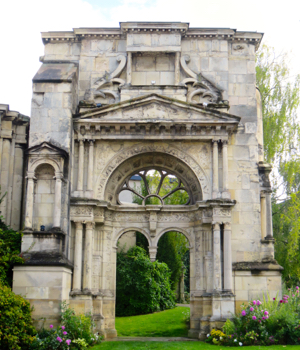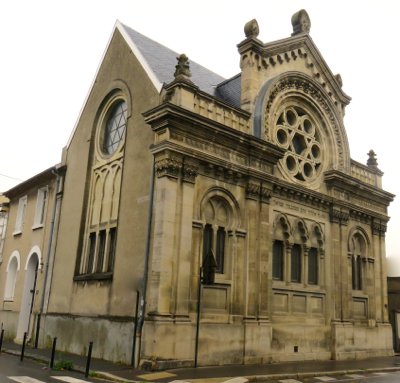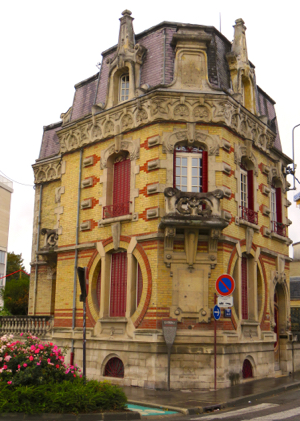 |
Historic Buildings, Épernay, France | |
| Épernay has a number of interesting buildings close to the town center. | ||
|
|
|
Like many towns in the area, Épernay suffered great damage in both World War I and World War II. As a result many buildings were damaged, but a handful of interesting examples can still be seen. A few remnants from the 16th century remain, including the home of Louise de Savoie (mother of King François I). The nearby Place Hugues Plomb has the remains of the Portail St-Martin, a stone archway also dating from the 16th century. It is the sole remaining part of the former church of Notre-Dame and the Saint Martin Abbey.
Other sights in Épernay include the beautiful Hôtel de Ville, built in 1858 for the Champagne trader M Auban-Möet. You'll see the Hôtel de Ville if you go to the Tourist Office, as it's right next door. This gracious building is surrounded by gardens, a park, and and a war memorial. Several of the more interesting buildings date from the late 19th century. The Synagogue (1890) is in Neo-Byzantine style, with a lovely rose window embracing the star of David.
Construction of the church of Notre-Dame, in Neo-Gothic style, was started in 1898. Unfortunately it was badly damaged during World War I, so was not consecrated until after restoration in 1925. The church includes some historic stained glass from the 16th century. Closer to the train station, at the Place Mendès France, is the century-old Italinate Gabrielle Dorziat Theater. The theater opened in 1902 and is named for a local actor from Épernay. Gabrielle Dorziat was known both for her stage plays and her work in cinema, most notably Les Parents Terribles by Jean Cocteau. Perhaps the most charming building in Épernay, the Maison de la Lune, or House of the Moon, is a fine example of art nouveau. Built in 1896, this lovely house incorporates many elements of this style. The architect, Henri Clouet, was also the architect for the Synagogue. If you're in Épernay and want a break from champagne, take a walk around the town and admire these lovely buildings!
|
|
Above, Maison de la Lune, an art nouveau building in the style of Nancy.
|



